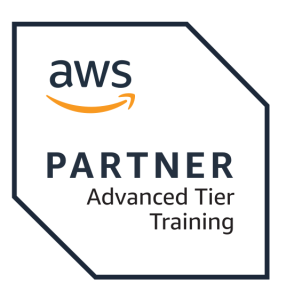This course will cover the following concepts:
Module 1: Introduction to Amazon Web Services
- Summarize the benefits of AWS
- Describe differences between on-demand delivery and cloud deployments
- Summarize the pay-as-you-go pricing model
Module 2: Compute in the Cloud
- Describe the benefits of Amazon Elastic Compute Cloud (Amazon EC2) at a basic level
- Identify the different Amazon EC2 instance types
- Differentiate between the various billing options for Amazon EC2
- Describe the benefits of Amazon EC2 Auto Scaling
- Summarize the benefits of Elastic Load Balancing
- Give an example of the uses for Elastic Load Balancing
- Summarize the differences between Amazon Simple Notification Service (Amazon SNS) and Amazon Simple Queue Services (Amazon SQS)
- Summarize additional AWS compute options
Module 3: Global Infrastructure and Reliability
- Summarize the benefits of the AWS Global Infrastructure
- Describe the basic concept of Availability Zones
- Describe the benefits of Amazon CloudFront and Edge locations
- Compare different methods for provisioning AWS services
Module 4: Networking
- Describe the basic concepts of networking
- Describe the difference between public and private networking resources
- Explain a virtual private gateway using a real life scenario
- Explain a virtual private network (VPN) using a real life scenario
- Describe the benefit of AWS Direct Connect
- Describe the benefit of hybrid deployments
- Describe the layers of security used in an IT strategy
- Describe which services are used to interact with the AWS global network
Module 5: Storage and Databases
- Summarize the basic concept of storage and databases
- Describe benefits of Amazon Elastic Block Store (Amazon EBS)
- Describe benefits of Amazon Simple Storage Service (Amazon S3)
- Describe the benefits of Amazon Elastic File System (Amazon EFS)
- Summarize various storage solutions
- Describe the benefits of Amazon Relational Database Service (Amazon RDS)
- Describe the benefits of Amazon DynamoDB
- Summarize various database services
Module 6: Security
- Explain the benefits of the shared responsibility model
- Describe multi-factor authentication (MFA)
- Differentiate between the AWS Identity and Access Management (IAM) security levels
- Describe security policies at a basic level
- Explain the benefits of AWS Organizations
- Summarize the benefits of compliance with AWS
- Explain primary AWS security services at a basic level
Module 7: Monitoring and Analytics
- Summarize approaches to monitoring your AWS environment
- Describe the benefits of Amazon CloudWatch
- Describe the benefits of AWS CloudTrail
- Describe the benefits of AWS Trusted Advisor
Module 8: Pricing and Support
- Understand AWS pricing and support models
- Describe the AWS Free Tier
- Describe key benefits of AWS Organizations and consolidated billing
- Explain the benefits of AWS Budgets
- Explain the benefits of AWS Cost Explorer
- Explain the primary benefits of the AWS Pricing Calculator
- Distinguish between the various AWS Support Plans
- Describe the benefits of AWS Marketplace
Module 9: Migration and Innovation
- Understand migration and innovation in the AWS Cloud
- Summarize the AWS Cloud Adoption Framework (AWS CAF)
- Summarize six key factors of a cloud migration strategy
- Describe the benefits of various AWS data migration solutions, such as AWS Snowcone, AWS Snowball, and AWS Snowmobile
- Summarize the broad scope of innovative solutions that AWS offers
- Summarize the five pillars of the AWS Well-Architected Framework
Module 10: AWS Certified Cloud Practitioner Basics
- Determine resources for preparing for the AWS Certified Cloud Practitioner examination
- Describe benefits of becoming AWS Certified
